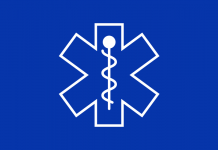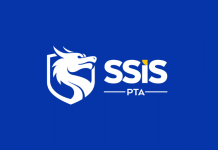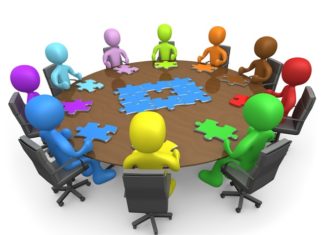Dear SSIS Parents:
Last Monday afternoon, 24 April 2017, we gave a presentation to our faculty and parents regarding our SSIS Strategic Plan. While all great schools are constantly looking for improvement, and while changes can come even within a single school year, it is important to look out farther on the horizon to determine what areas to focus on in order to bring the best education we can for our students.
The plan we have adopted will define our major areas of focus for the next three years and beyond. Having now established these areas, we are busy planning the action plans which will accomplish our broad goals. Some of these action plans will begin this Spring, others in the fall, still others will not be fully implemented for a year or more. As not everyone was able to attend last Monday, though, I would like to share with the community the broad areas upon which we have settled.
The plan calls for advances in four areas:
- Institutional Excellence
- Academic & Program Excellence
- Faculty Excellence
- Community Pride and Engagement
In this and subsequent articles I will discuss what is meant by each. Here I would like to focus on “Institutional Excellence.”
There are many great schools around the world, each different from the next. What they share is a single-minded attention to their mission. SSIS, to assure the long-term sustainability and effectiveness of our School, sees three major tasks:
- Growth – Plan sustainable growth to maximize the quality of rigorous programs and opportunities which demand academic excellence from each student across all divisions, including AP and IB opportunities in the high school.
- Financial Sustainability
- Generate sufficient revenue to support and maximize academic and program excellence and the retention of best staff.
- Effectively steward all school resources to support strategic initiatives, and ensure stability for the future.
- Facilities – Develop a facilities plan driven by the academic and programmatic needs of the school and the community.
Growth
Very early in the history of SSIS, our Founders made a commitment to an image of education in which they believed – that of the best private, independent schools found in the northeast of the United States. These schools are forward thinking in terms of pedagogy, but also traditional in the belief that a well-educated person, to live a purposeful life, needed a liberal arts grounding in all the major disciplines as well as a deep appreciation for the arts, athletics, and service.
The SSIS curriculum, then, does not follow any one system (e.g. a US State standard such as “California Math,” the IBO Primary Years Program (PYP) or Middle Years Program (MYP), the National Curriculum for England, etc.) but instead uses the best ideas found around the world to create its own curriculum. In the upper grades, however, we do offer two programs as our Founders intended – CollegeBoard Advanced Placement (AP) classes and the IBO Diploma Program (IB-DP). AP classes offer powerful college-level coursework, with the opportunity to demonstrate mastery on an external exam. The IB-DP offers a great college preparatory program, asking the student to explore six keys areas of learning as well as provide service, write an extended research paper, and explore the very idea of learning and knowledge. The IB diploma is earned through both school-based grades and externally moderated exams. Both programs are excellent preparation for top universities and colleges around the world.
However, as we are committed to both programs, we recognize that we need a larger student body in the high school to offer both dedicated sections of AP and IB courses and offer a range of courses to suit most students. In other words, we need to grow the number of students in high school. We are going to set targets and then build towards that growth. We will do so while continuing to admit only mission appropriate students who have the intellectual capacity and drive to succeed in these courses. We will not relax standards simply to grow numbers. We are committed to high academic achievement across all subjects.
Financial Sustainability
Education costs money. You cannot offer a world-class education without financial costs. We must continue to examine our resources and revenues to support great teachers, great facilities that are needed for innovative teaching and learning, especially in science, engineering and technology, and be able to provide for those. At the same time, we feel a great sense of responsibility that we must be great stewards in how we use the money that comes in as tuition. We know our parents make a financial sacrifice to bring their children to SSIS and keep them here. We promise never to waste our resources but always to focus our spending on those things which make for a great SSIS education: our faculty and staff, our facilities, our infrastructure and equipment, and our teaching materials.
Facilities
A growing school must look at facilities. We believe our reputation as the school with the best facilities in Ho Chi Minh City is well justified. We also realize that the classes and courses we are planning will require new and improved facilities. Consider just one example—the elementary school MakerSpace and the middle school DesignLab. Clearly, we must create a similar space in the high school to accommodate increased course offerings in programming, robotics and engineering, and scientific research.
I am excited by the call for Institutional Excellence. What excites me, though, is what will fill these facilities and beckon to our increased student numbers—our plans for ensuring Academic & Program Excellence, a subject I will take up in my next post.
Sincerely yours,
Mark Iver Sylte, Head of School


![[AS] Welcome New Faculty, 2023-2024 (May 2023) Head of School Letter header](https://enews.ssis.edu.vn/wp-content/uploads/2022/08/HOS-Letter-SY22-23-218x150.png)

![[AS] Award-Winning Author Minh Lê Visits SSIS!](https://enews.ssis.edu.vn/wp-content/uploads/2023/04/Minh-Le-218x150.jpg)
![[AS] Annual Community Survey](https://enews.ssis.edu.vn/wp-content/uploads/2022/03/2022-Community-Survey-218x150.jpg)
![[ES] Classroom Placement, 2023-2024 – Opportunity for Parent Input elementary school general graphic](https://enews.ssis.edu.vn/wp-content/uploads/2022/07/ES-eNews-Cover-218x150.png)

![[G6-8] Important End-of-Year Events and Dates](https://enews.ssis.edu.vn/wp-content/uploads/2022/07/MS-eNews-Cover-218x150.png)


![[G9-11] Invitation to University Application Policies and Procedures, Wednesday, 8:00 am](https://enews.ssis.edu.vn/wp-content/uploads/2020/10/University-Application-Process-218x150.jpg)
![[G12] US Student Visa: US Consulate to Provide Information, Monday, May 8, 6:00 – 7:30 pm HS eNews Cover](https://enews.ssis.edu.vn/wp-content/uploads/2022/07/HS-eNews-Cover-218x150.png)






